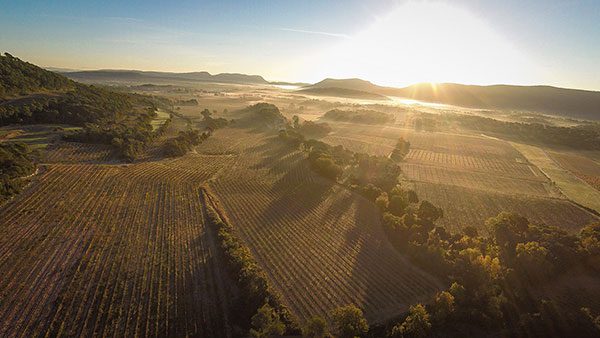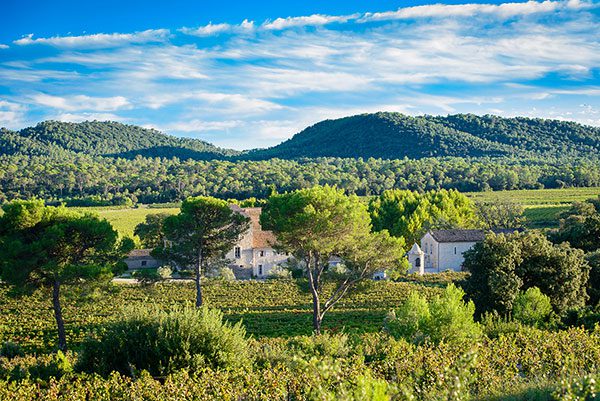GEOGRAPHY
In the shape of a diamond, 30 km long and 15 km wide, the Pic Saint-Loup AOC area backs onto the first foothills of the Cévennes in the Garrigues region north of Montpellier, 30 km from the Mediterranean coast.

The Pic Saint-Loup area enjoys a Mediterranean micro-climate particularly suitable for growing vines.
The Coteaux du Languedoc Pic Saint-Loup Appellation
The appellation “Coteaux du Languedoc Pic Saint-Loup” was created in 1985, to which some production constraints were added in 1994.
The Pic Saint-Loup area includes thirteen communes which extend from the north of the Montpellier conurbation to the département of the Gard. It consists of a plateau whose highest points are the Pic Saint-Loup and the Hortus plateau, separated from each other by the trouée de Montferrand, and a valley which was created after the fracture of the Corconne fault (end of the Cretaceous period) and which today is the main point of entry to the region, running in a north-east/south-west direction.
Only a few types of soil have been included in the current AOC region, out of concern for the quality of the wines produced.

Cool nights and sunny days influence the vine’s vegetative cycle.
A Mediterranean microclimate
The Pic Saint-Loup region enjoys a Mediterranean micro-climate particularly suitable for growing vines:
- Descending the foothills of the Cévennes, in the north, the influence of the mainland climate mingles with that of the Mediterranean climate, carried from the nearby coastline to the south. The hot and dry summers, preceded by cool springs, alternate with the cold and rainy winter and autumn seasons. With its position as “advance guard of the Cévennes”, Pic Saint-Loup influences its rainfall figures, which are on average 800 millimetres per year, providing the necessary amount of water and compensating for the rainfall deficit which vines can suffer in the summer. The terroir of Pic Saint-Loup is the wettest in the Languedoc.
- Cool nights and sunny days which particularly influence the vine’s vegetative cycle (daily circadian temperature variations of >12°) in August and September which contribute to the expression of fine and fresh aromas in the wines.
- Thanks to its hilly terrain, the terroir is protected from strong gusts of wind, but benefits from the regular moderate breezes of the Mistral and the Tramontane which protect the vineyard from the advances of the humid sea air, which carries the risk of disease, while bringing dry cool air which is beneficial to the vineyard.
These climatic particularities contribute to the typicality of Pic Saint-Loup wines and shape their organoleptic qualities.


